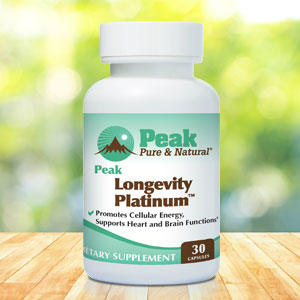Get Easy Health Digest™ in your inbox and don’t miss a thing when you subscribe today. Plus, get the free bonus report, Mother Nature’s Tips, Tricks and Remedies for Cholesterol, Blood Pressure & Blood Sugar as my way of saying welcome to the community!
Stop going against the grain to live longer

It seems everyone is going against the grain. But if you want to live longer, avoid heart disease and cancer — you may want to make ‘nice’ with grains again.
Now, of course, people who are sickened by grains should avoid them at all costs… that would include anyone who suffers a severe reaction to gluten, like those with celiac disease or gluten intolerance. But in recent years, going gluten-free has become a movement that includes weight loss diets and even the popular Paleo diet.
But researchers from the Harvard T.H. Chan School of Public Health found that people who ate the most whole grains (70 grams/day, about 4 servings), compared with those who ate little or no whole grains, had a lower risk of dying.
So if you aren’t avoiding grains for a reason detrimental to your health, merely avoiding them altogether could be impacting your health — detrimentally.
What they found about going against the grain
The results showed that people who ate 70 grams/day of whole grains, compared with those who ate little or no whole grains, had a 22% lower risk of total mortality, a 23% lower risk of CVD mortality, and a 20% lower risk of cancer mortality.
“These findings further support current dietary guidelines that recommend at least 3 daily servings (or 48 grams) of whole grains to improve long-term health and prevent premature death,” said Qi Sun, assistant professor in the Department of Nutrition and senior author of the study that was published online June 13, 2016 in Circulation.
Previous studies have found that whole grains may reduce the risk of cardiovascular disease (CVD), diabetes, and poor gut health, among other conditions.
The study was a meta-analysis that combined results from 12 published studies, in addition to unpublished results from the National Health and Nutrition Examination Survey (NHANES) III and NHANES 1999-2004. The studies were conducted in the United States, the United Kingdom, or in Scandinavian countries between 1970 and 2010. Health information from 786,076 participants was included in the analysis.
What is it about grains that promote a longer, disease-free life?
The Harvard researchers note that multiple bioactive compounds in whole grains could contribute to their health benefits. But the really impressive nutrient in grains could be the fiber content…
High fiber content may lower cholesterol production and glucose response. And recent research by Australian researchers found that people with the greatest fiber intake had close to an 80 percent higher chance of living a longer, healthier life than those who weren’t consuming as much.
So if your intake of both healthy grains and fiber has been less than stellar in recent years, it’s time to consider a change. Here are some tips you can follow to make sure you get enough of these grainy health-boosting nutrients in your diet:
- Go whole grain. Always choose whole-grain bread and pasta over their white counterparts. They’re much higher in fiber. Brown rice is more fiber-filled than white rice too. Also, ultra-processed bleached flour products are severely lacking in the compounds and nutrients that make whole grains so good for you.
- Eat a fiber-filled breakfast. This can kick-start your metabolism and set your bowels up for success. Some good breakfasts include oatmeal, brown rice breakfast cereal or granola filled with nuts and fruit.
- Add extra fiber whenever you can. You can add flax seeds to your smoothie, wheat germ to your pancakes and beans to your salads and soups. Pretty much whenever you’re making food, stop and ask yourself: How can I add more fiber?
- Eat different types of fiber. When it comes to eating fiber, variety is key. Both soluble and insoluble are good for your body in different ways, and they come from different types of foods. Soluble fiber is found in oats, barley, beans, peas, soybeans, apples, banana, berries, certain vegetables and psyllium husk. Insoluble fiber is found in green beans, dark leafy vegetables, whole wheat products, fruit and root vegetable skins, seeds and nuts.
Editor’s note: Are you feeling unusually tired? You may think this is normal aging, but the problem could be your master hormone. When it’s not working, your risk of age-related diseases skyrockets. To reset what many call “the trigger for all disease” and live better, longer, click here to discover The Insulin Factor: How to Repair Your Body’s Master Controller and Conquer Chronic Disease!













